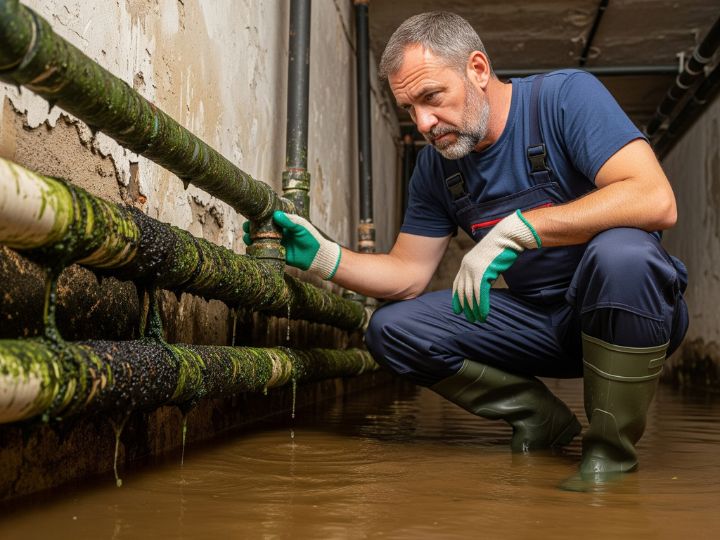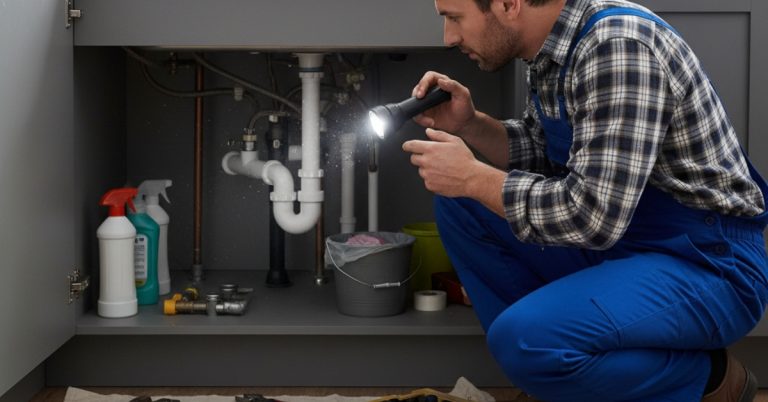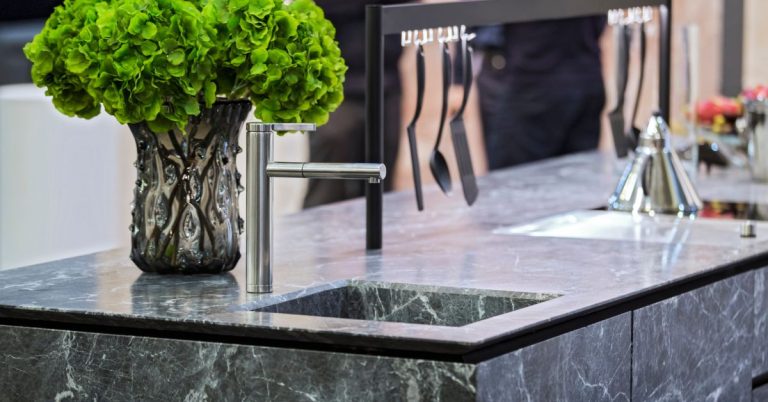Flooding is among the most devastating events a home or building can endure. Beyond the immediate destruction to walls, floors, and belongings, hidden threats such as mold growth in plumbing after flooding can persist long after the water subsides. Mold flourishes in damp, dark spaces, making pipes, drains, and other plumbing fixtures ideal breeding grounds. Prompt detection and remediation are essential to safeguard health and prevent additional structural damage.
Table of Contents
Understanding Mold Growth in Plumbing Systems
When floodwaters infiltrate a property, they saturate surfaces and penetrate areas often overlooked during cleanup. Plumbing systems, with their network of pipes, joints, and fixtures, provide the perfect environment for mold spores to flourish. Moisture combined with organic debris washed into pipes during flooding creates an ideal habitat for colonies to establish.
Mold can grow inside pipes, behind walls where pipes run, in drain traps, and in any areas where water stagnated during or after the flood. Over time, this growth may lead to musty odors, water discoloration, and even health symptoms like respiratory irritation and allergies.
Signs of Mold in Plumbing After Flooding
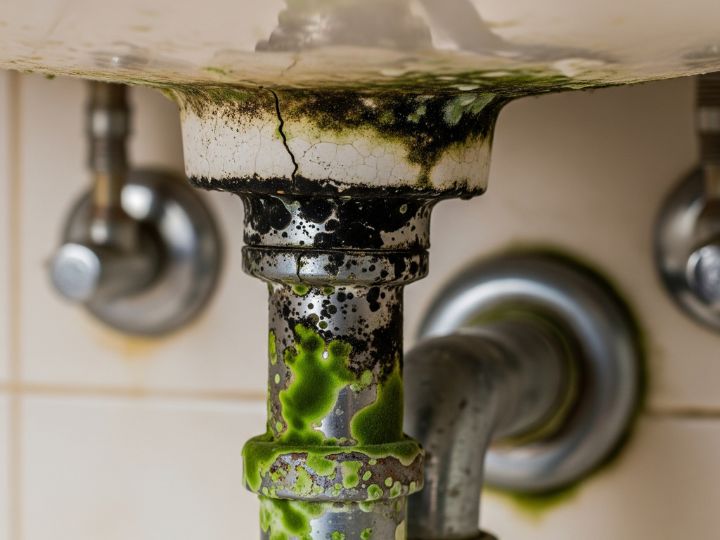
Identifying mold within plumbing systems requires vigilance. Some of the most common indicators include:
- Persistent Musty Odors: A consistent damp, earthy smell from drains or faucets suggests mold growth inside pipes, as moisture left after flooding creates the perfect environment for spores to thrive.
- Visible Growth: Black, green, or brown mold spots appearing near pipe joints, under sinks, or around drains indicate active fungal colonies forming in moist, hidden areas post-flooding.
- Slow Drainage: Mold accumulation inside pipes may partially block water flow, causing drains to empty slowly. This buildup often results from organic debris trapped during flooding.
- Water Discoloration: Brown or black tinges in tap water can signal mold or bacteria in the plumbing system, contaminating the water supply after flood exposure.
- Health Issues: Post-flooding, increased allergies, coughing, or skin irritations among residents often result from mold spores released into the air or water through affected plumbing systems.
How to Detect Hidden Mold in Plumbing Systems
While surface mold is easy to spot, hidden mold inside plumbing systems requires more thorough inspection:
1. Use a Moisture Meter
A moisture meter detects hidden dampness behind walls, floors, or ceilings where pipes run. Persistent moisture in these areas often signals leaks, creating ideal conditions for concealed mold growth.
2. Perform Drain Camera Inspections
Plumbers use specialized drain cameras to navigate inside pipes. This technology helps spot blockages, cracks, or mold buildup directly within plumbing lines, providing clear visuals of otherwise inaccessible problem areas.
3. Test Air Quality
Air quality testing measures mold spore levels in your home. Elevated spore counts indicate active mold growth in hidden areas, including plumbing systems, requiring immediate investigation and remediation.
4. Hire Professional Mold Assessors
Certified mold inspectors utilize advanced tools like thermal imaging and moisture detection. Their expertise helps pinpoint concealed mold colonies deep within plumbing systems, ensuring thorough detection and effective solutions.
Effective Ways to Fix Mold in Plumbing Systems
Removing mold from plumbing after flooding requires a multi-step approach to ensure complete eradication and prevent recurrence.
Step 1: Shut Off Water Supply
Cut off the main water supply to avoid spreading mold spores through water flow during cleaning or repairs.
Get your water heater repaired or replaced the same day
Step 2: Clean and Disinfect Visible Mold
Use a commercial-grade mold remover or a solution of bleach and water (1 cup bleach per gallon of water) to scrub visible mold on accessible plumbing surfaces. Always wear protective gloves, goggles, and an N95 respirator during cleanup.
Step 3: Replace Contaminated Plumbing Components
If mold has deeply penetrated porous materials such as rubber gaskets or pipe insulation, replacement is often the safest option.
Step 4: Flush the Plumbing System
Flush pipes with a mixture of water and an antimicrobial solution to kill lingering mold spores and biofilm inside the pipes.
Step 5: Dry the Area Thoroughly
Use industrial fans and dehumidifiers to dry out affected areas, especially behind walls or under floors where plumbing is located. Maintaining humidity below 50% discourages future mold growth.
Step 6: Seal Leaks and Insulate Pipes
Repair any leaks promptly and add insulation to pipes prone to condensation to prevent recurring moisture problems.
Preventing Mold Growth in Plumbing After Flooding
The key to stopping mold is controlling moisture. Follow these preventive measures:
- Regular Plumbing Inspections: Schedule routine professional plumbing inspection service to catch leaks or early signs of mold.
- Install Backflow Preventers: These devices stop floodwater from entering your plumbing system during heavy rains or sewer backups.
- Maintain Good Ventilation: Ensure adequate airflow in areas where plumbing runs, especially under sinks and in basements.
Use Dehumidifiers: In humid climates or flood-prone areas, dehumidifiers can keep indoor moisture levels in check.
When to Call Professionals for Mold Remediation
While minor surface mold can often be handled by homeowners, significant infestations in plumbing systems require professional intervention. Mold remediation experts use advanced techniques like dry ice blasting, HEPA vacuuming, and antimicrobial treatments to eradicate mold colonies effectively.
Additionally, licensed plumbers can repair and replace contaminated sections of the system safely, ensuring your home’s plumbing is mold-free and functioning optimally.
Health Risks of Mold in Plumbing Systems
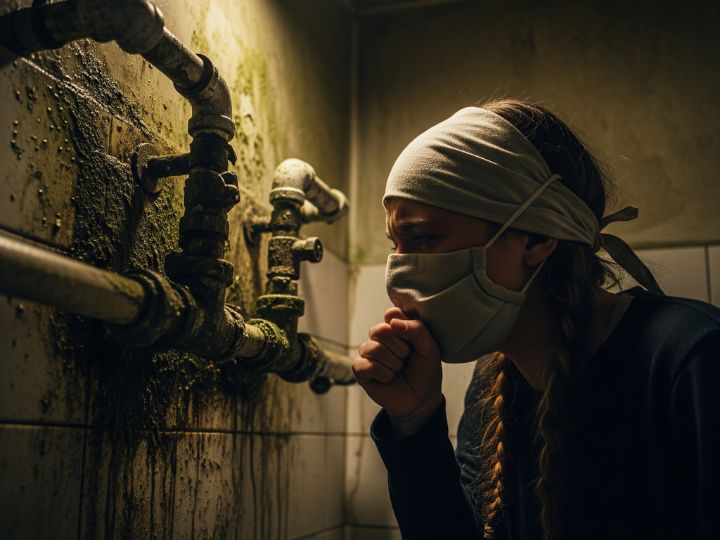
Exposure to mold, especially after flooding, can have serious health consequences. Vulnerable individuals such as children, the elderly, and those with respiratory conditions may experience:
- Chronic coughing and sneezing
- Eye and skin irritation
- Asthma attacks
- Respiratory infections
Addressing mold in plumbing promptly not only protects your home but also safeguards the well-being of everyone inside.
Final Thoughts
Mold in plumbing after flooding isn’t just an inconvenience—it’s a serious threat to your home’s safety and your family’s health. Acting quickly can prevent long-term damage, costly repairs, and hazardous mold exposure. From detecting musty odors to addressing hidden growth with professional tools, every step matters in keeping your plumbing system clean and safe. Staying proactive with regular inspections and moisture control is your best defense against future problems.
If you’re dealing with stubborn mold issues or need reliable emergency plumbing services after flooding, don’t wait for the damage to worsen. Call the experts at 5 Star Best Plumbing. Our certified team specializes in fast, thorough mold remediation and plumbing service solutions to restore your home’s safety and comfort.
FAQs
Can mold really grow inside plumbing systems after flooding?
Yes, mold can develop inside pipes, drains, and fixtures where moisture and organic debris accumulate after a flood. These damp, enclosed spaces provide the perfect environment for mold spores to thrive and spread.
How do I know if there’s mold in my plumbing?
Watch for signs like persistent musty odors, slow drainage, water discoloration, or visible mold near pipe joints and drains. Health symptoms such as allergies or respiratory irritation can also indicate hidden mold in your plumbing.
Is it safe to clean mold in plumbing by myself?
Small, visible mold areas can often be cleaned with proper safety gear and disinfectants. However, hidden or extensive mold infestations should always be handled by professionals to avoid health risks and incomplete removal.
How can professionals remove mold from plumbing systems?
Experts use tools like drain cameras, HEPA vacuums, and antimicrobial treatments to locate and eliminate mold. They also replace contaminated components and ensure the system is thoroughly cleaned and dried to prevent recurrence.
How can I prevent mold growth in my plumbing after a flood?
Regular plumbing inspections, proper ventilation, and using dehumidifiers can help control moisture levels. Installing backflow preventers and repairing leaks promptly will also reduce the chances of mold forming in your system.

